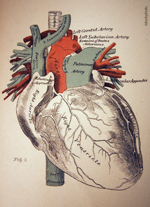Higher education hasn’t changed much for two centuries, until now… (read more in Nature Medicine).
The landscape of education, especially within the sciences, is continually evolving. As an educational consultant with a deep interest in the intersection of academia and industry, I’ve been particularly intrigued by the rise of the Professional Science Master’s (PSM) degree. This innovative program blends scientific expertise with business acumen, addressing the dynamic needs of today’s job market.
Adapting to Labor Market Needs
Reflecting on the journey of individuals like Brendan Tierney, who transitioned from working in a juice factory to researching antiviral and anticancer compounds, the impact of the PSM degree becomes evident. Brendan’s story is not just about academic progression; it’s about a transformative career shift facilitated by the structured, industry-aligned nature of the PSM program. His success story is a testament to the degree’s potential to bridge the gap between traditional academia and the applied scientific workforce.
The PSM degree, as I see it, is a silent revolution in science education. It caters to a growing segment of students who are keen on applying scientific knowledge in practical settings without committing to the long haul of a Ph.D. The blend of science and management training within these programs is meticulously designed to meet the fast-paced, versatile demands of industry jobs.
From my perspective, the rise of PSM programs signifies a shift in higher education paradigms. Traditional master’s programs have often been viewed as stepping stones to Ph.D. research paths. However, PSM degrees are carving out a new niche, recognizing the value and potential of applied science careers. They offer a pragmatic alternative for students like Dawn Carone and Kali Bogaard, who, despite initial interests in traditional academic routes, found their true calling in the more varied and industry-focused PSM pathways.
What fascinates me about PSM programs is their adaptability and responsiveness to market needs. These programs are not static; they evolve through direct feedback and involvement from the industry. This dynamic synergy between academic institutions and businesses ensures that the curriculum remains relevant, practical, and forward-thinking. However, this does not come without challenges. As Daryl Chubin points out, establishing robust business components in the curriculum demands substantial effort and close cooperation between universities and the industrial sector.
Diversity and Inclusivity in Science Education
The flexibility and diversity of PSM programs are particularly appealing to a wide range of students, including a significant number of women. This is a notable development, as it suggests that PSM degrees are contributing to diversifying the scientific workforce, offering pathways that are not only academically rigorous but also financially and professionally rewarding.
As an educational consultant, I see the PSM degree as a beacon of modern science education. It embodies the principles of effective learning: adaptability, industry relevance, and inclusivity. These programs are not merely academic offerings; they are gateways to fulfilling and prosperous careers in science and technology.
In conclusion, the emergence of the Professional Science Master’s degree marks a pivotal moment in science education. It challenges traditional notions and opens up new avenues for students to engage with science in a manner that aligns with their career aspirations and life goals. As someone deeply invested in the future of education, I am excited about the potential of PSM programs to reshape the landscape of higher learning and empower the next generation of scientists and industry leaders.







